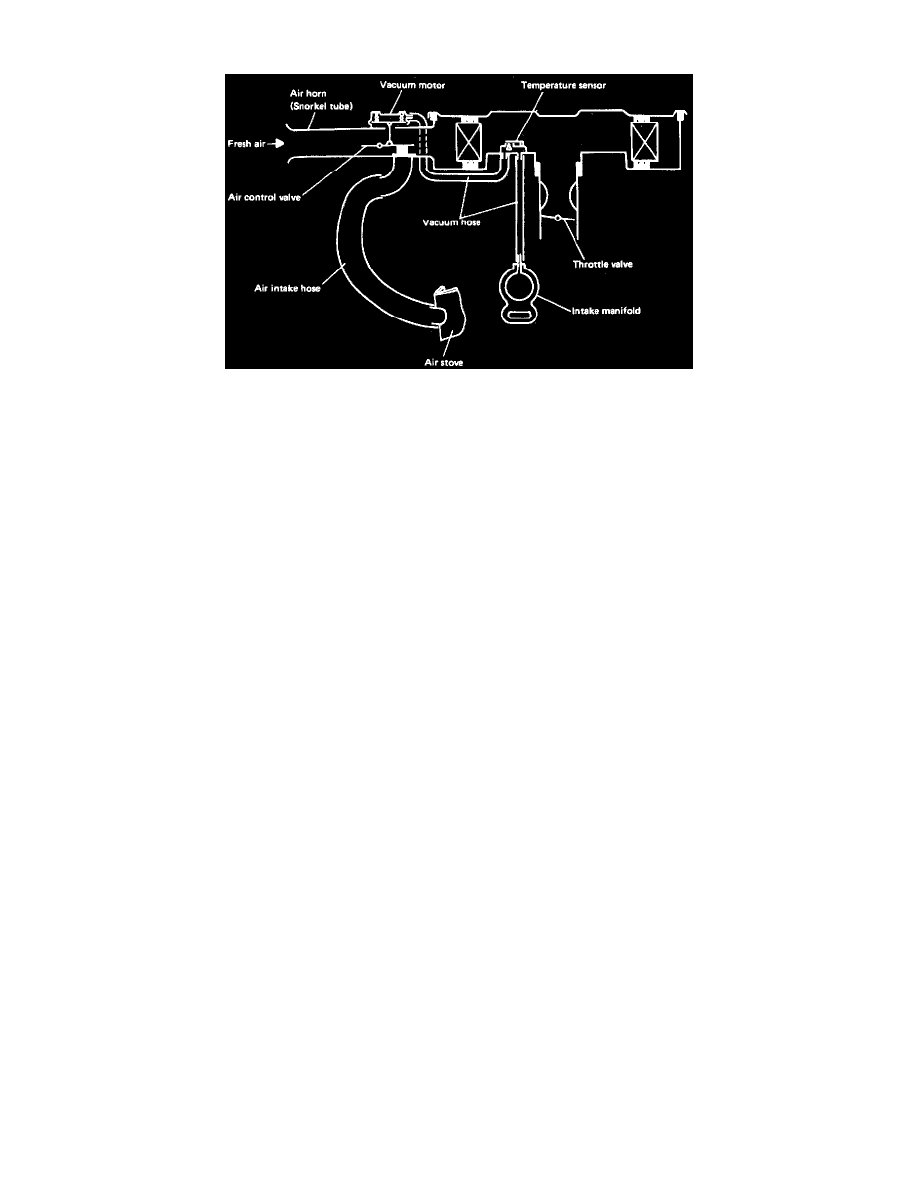Brat F4-1781cc 1.8L (1982)

Thermostatic Air Cleaner: Description and Operation
Fig.36 - Thermostatically Controlled Air Cleaner System
Description
This system, Fig. 36, includes the air cleaner, the air stove on the exhaust manifold, and the air intake hose connecting the air cleaner and air stove.
The air cleaner is equipped with an air control valve which maintains the temperature of the air being drawn into the carburetor at 100 to 127° F to
reduce HC emission when the under hood temperature is below 100°.
In addition to that, the air control valve also serves to prevent carburetor icing and improve the warm-up characteristics of the engine. The
temperature sensor detects the intake air temperature and opens or closes the vacuum passage between the intake manifold and vacuum motor.
The flame arrester prevents flames from entering the crankcase through the crankcase ventilation hoses in case back fire occurs. The air stove is
mounted at the front end of the exhaust pipe. Fresh air is warmed up in this air stove and then introduced into the air cleaner through the air intake
hose.
Operation
The air control valve is controlled by the inlet air temperature and the engine operating condition. The temperature sensor detects the inlet air
temperature and controls the flow of vacuum to the vacuum motor.
When the under-hood temperature is low and the intake manifold vacuum is high, the sensor valve remains closed and establishes vacuum passage
from the intake manifold to the vacuum motor diaphragm. In this condition, the vacuum actuates the diaphragm which opens the air control valve
to introduce hot air into the air cleaner through the air intake hose from the air stove.
When the under-hood temperature is low but the intake manifold vacuum is too weak to actuate the diaphragm, the sensor valve remains closed
and the air control valve closes the hot air passage, allowing only under-hood air (cool air) into the air cleaner through its snorkel tube. When the
under-hood air temperature is high, the sensor valve opens fully to break the vacuum passage between the intake manifold and the vacuum motor
diaphragm. In this condition, the diaphragm return spring presses the air control valve to close the hot air passage and the under-hood air (cool air)
is admitted into the air cleaner through its snorkel tube.
When the under-hood air temperature is around 1OO° F, the sensor valve is partially opened and the opening of the air control valve varies with
the vacuum from the intake manifold.
With the air control valve partially opened, cool air and hot air are drawn together and mixed, controlling the temperature of the air to be
introduced to the air cleaner.
